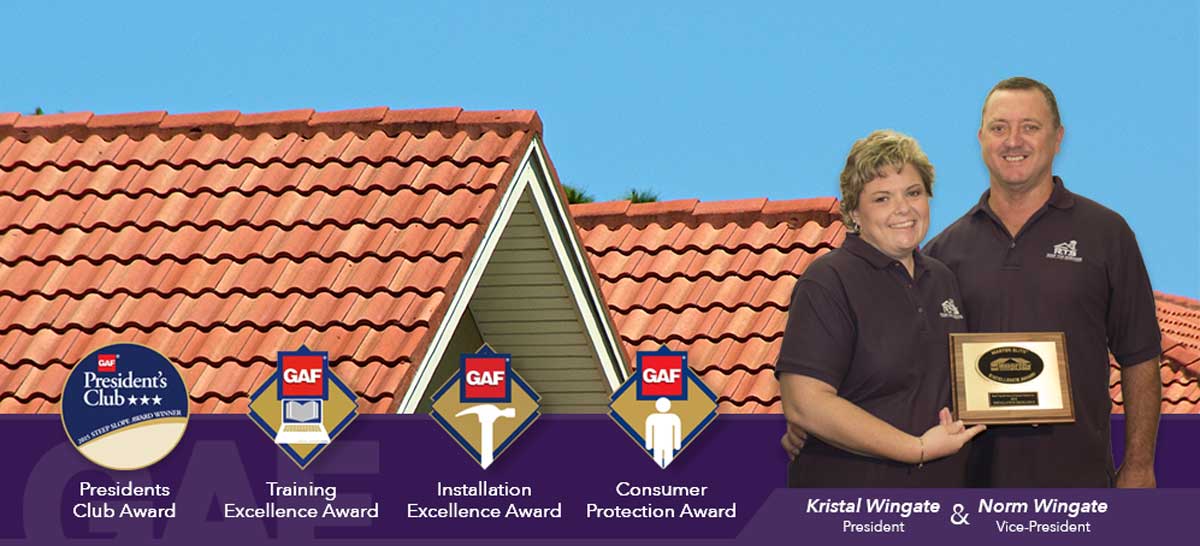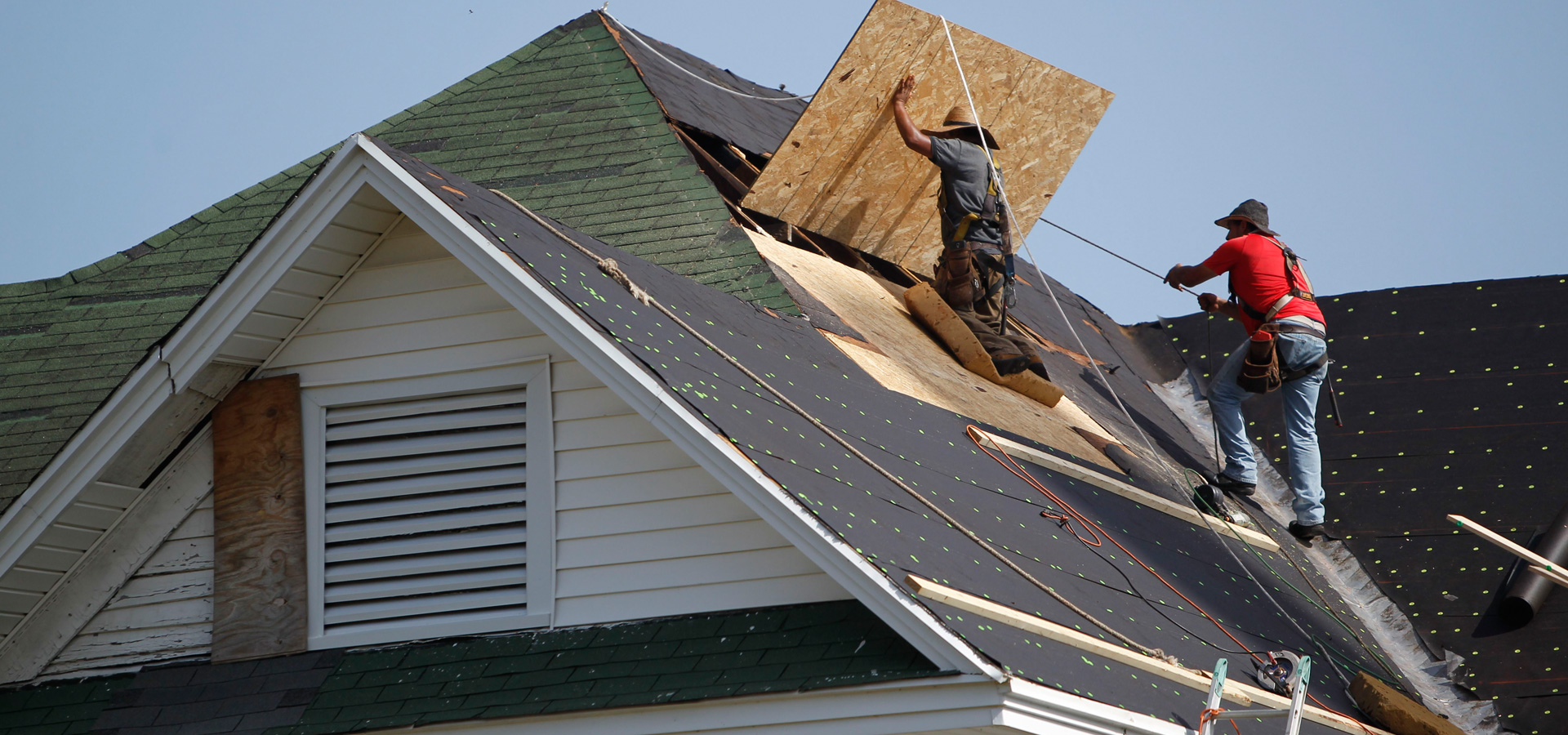Top Tips for Effective Roof Fixing: Keeping Your Home Protected
Efficient roof repair service is important for preserving a safe and audio home. Property owners frequently overlook typical concerns that can result in significant problems otherwise dealt with promptly. Regular inspections can determine potential hazards early. honolulu roofing materials. Comprehending when to take on repair services yourself and when to call an expert is equally important. Checking out these aspects can help prevent costly mistakes, making certain the long life of your roof covering. What are the key components to show upon in this choice?
Recognizing Common Roof Issues
When homeowners overlook regular maintenance, they typically come across common roof covering issues that can lead to considerable damages. One widespread issue is shingle damage, which can happen as a result of age, weather, or incorrect installment. Cracked, curled, or missing shingles endanger the roofing's stability, allowing water to seep in. An additional concern is the build-up of moss and algae, which not just impacts aesthetics yet can additionally catch dampness versus the roofing system, accelerating degeneration. In addition, blinking failure around smokeshafts and vents can result in leaks, specifically during hefty rains. Blocked rain gutters better worsen these issues, causing water to swimming pool and raising the threat of architectural damage. Property owners need to remain attentive to these issues, as resolving them promptly can stop pricey repair services and lengthen the life-span of the roof covering. Recognizing these common roofing system concerns is essential for maintaining a protected home atmosphere.
Evaluating Your Roofing system: What to Look For
When examining a roof, it is necessary to recognize signs of damage and wear that might bring about more significant concerns. Routine upkeep checks can aid home owners catch problems early, ensuring the roof covering stays in excellent condition. By being proactive, they can expand the life expectancy of their roof and prevent pricey fixings.
Indications of Damages
A roof covering may appear undamaged from the ground, refined indicators of damage can commonly go undetected. Homeowners should be alert in their evaluations, looking for missing out on, split, or curling shingles that suggest wear. Dark spots or streaks might suggest wetness buildup, while granules in seamless gutters can signify roof shingles degeneration. In addition, assessment of flashing around chimneys and vents is crucial, as corrosion or voids can cause leakages. Inside the home, water discolorations on ceilings or wall surfaces may disclose covert roof issues. Mold development in attic rooms or along eaves can also aim to underlying problems. Routinely observing these signs can help home owners address roof damage quickly, ensuring their home remains safe and noise.
Routine Maintenance Checks
Routine maintenance checks are vital for protecting a roofing system's stability gradually. Property owners must conduct aesthetic assessments at the very least twice a year, preferably in spring and fall. Key locations to analyze include roof shingles for curling, splitting, or missing pieces, in addition to the flashing around chimneys and vents for indications of corrosion or deterioration. Additionally, seamless gutters need to be free from debris to stop water build-up, which can lead to leakages. Checking for mold and mildew or moss growth can also show wetness issues. Inside the home, ceilings and attic room areas should be inspected for water stains or indicators of leaks. By dealing with these potential issues early, house owners can prolong the life-span of their roofing and maintain a safe, sound living environment.
Safety First: Preventative Measures for Roofing System Fixing
Prior to starting on roofing fixing, individuals need to focus on safety and security to mitigate dangers associated with working at heights. Appropriate preparation is essential; wearing suitable safety equipment, including non-slip footwear, handwear covers, and a helmet, can substantially reduce injury dangers. Additionally, making use of a tough ladder and making sure it is positioned on secure ground is crucial for secure access to the roof.It is a good idea to examine the roofing for prospective threats, such as loose roof shingles or unstable areas, prior to starting job. Using harness and fall protection systems can give additional security, particularly on high roof coverings. It is crucial to have a clear strategy in place, consisting of having a person on the ground to help here in case of emergencies. Lastly, operating in ideal weather, staying clear of strong winds or rain, will additionally improve safety. By taking these preventative measures, individuals can aid guarantee a much safer roof covering repair work experience.
DIY vs. Expert Repairs: Making the Right Option

Essential Tools and Materials for Roofing System Fixing
Selecting the right devices and materials is an important step for homeowners carrying out roof covering repair services, whether they go with a DIY approach or employ experts. Important tools include a sturdy ladder for risk-free gain access to, roof covering nails, a hammer, and an utility knife to reduce products accurately. A lever can assist in getting rid of damaged shingles, while a caulking gun is essential for sealing leaks.In regards to products, asphalt roof shingles are frequently utilized due to their toughness and cost-effectiveness. Homeowners must also consider underlayment, which gives an added layer of defense versus moisture. Flashing products are necessary for areas around chimneys and vents to stop leakages. Safety and security equipment, including gloves and safety glasses, is just as important to assure protection throughout repair services. By outfitting themselves with the right tools and materials, homeowners can boost the performance and safety and security of their roofing system repair work endeavors.
Preventive Upkeep: Expanding Your Roofing's Life expectancy
To guarantee a roof continues to be in optimal condition and optimizes its lifespan, property owners should focus on preventive maintenance. Normal evaluations are important; they permit for the very early detection of problems such as leakages, harmed tiles, or stopped up rain gutters. It is advisable to carry out these evaluations a minimum of twice a year, specifically after extreme climate events.Cleaning the roof covering is one more critical facet of upkeep. Eliminating particles like fallen leaves, branches, and moss aids stop water build-up and promotes correct water drainage. Property owners need to additionally check and preserve flashing around smokeshafts and vents to stay clear of water intrusion.Additionally, guaranteeing appropriate air flow and insulation in the attic room can prevent dampness accumulation, which can bring about mold and mildew and structural concerns. By spending effort and time right into preventive upkeep, home owners can significantly expand their roof's life-span, saving cash on pricey repairs or substitutes in the future.
Recognizing When to Change Your Roof covering
Just how can a home owner identify the right time to change their roofing system? A number of indications can indicate the requirement for substitute. To begin with, age is a vital aspect; most roofs last between 20 to 30 years, depending on product. Property owners need to additionally inspect for noticeable indications of damage, such as missing shingles, curling edges, or considerable granule loss. Water spots on ceilings or wall surfaces might suggest leaks, recommending underlying roofing system problems. Furthermore, a drooping roofline can indicate architectural issues, necessitating instant attention.Another factor to consider is energy effectiveness; increased home heating or air conditioning costs might show inadequate insulation or air flow because of roof covering damage. Finally, if repair work end up being frequent and costly, it may be much more economical to purchase a new roofing system. By examining these elements, house owners can make educated choices about roofing substitute, guaranteeing the honesty and safety and security of their home.
Often Asked Questions
Just how Often Should I Inspect My Roof Covering for Damages?
The frequency of roofing assessments ought to preferably be biannually, specifically after severe weather occasions. Routine checks aid identify damages early, avoiding expensive repairs and guaranteeing the long life of the roofing system's structural stability and function.

Can I Fix My Roof in Bad Climate?
Repairing a roof in poor weather condition is typically unadvisable (honolulu roofing materials). Rainfall, snow, or high winds can produce harmful conditions, boosting the threat of crashes and jeopardizing the high quality of the repair service, eventually resulting in further damages
What Are the Signs I Required a Complete Roofing Replacement?
Indicators suggesting a full roofing replacement include extensive roof shingles damages, leaks, drooping, visible mold, and age surpassing 20 years. Home owners need to evaluate these conditions to establish if fixing initiatives are insufficient for longer-term safety.
For how long Does a Normal Roofing Repair Take?
Usually, a roof repair can take anywhere from a couple of hours to several days, depending on the degree of the damages. Variables such as weather and the sort of materials used additionally influence the duration.

Will My House owner's Insurance Cover Roof covering Fixes?
Identifying whether homeowner's insurance policy covers roof covering repairs depends on the policy specifics. Typically, insurance coverage includes damage from unpredicted events, but exclusions might use. Insurance holders need to assess their terms or consult their insurance representative for clearness.
Comments on “Avoiding Scams: How to Choose Legitimate roofing contractors honolulu”